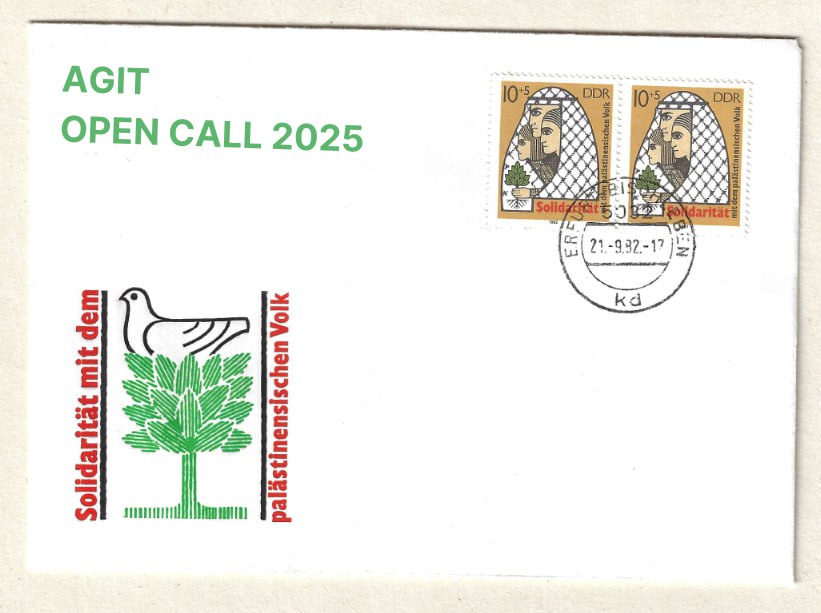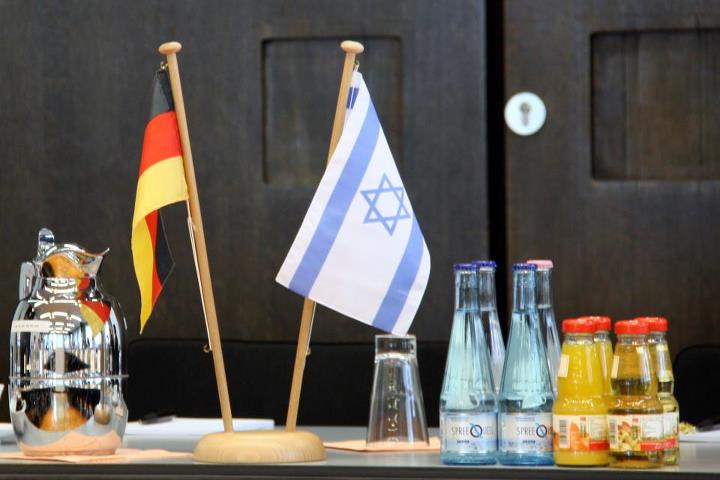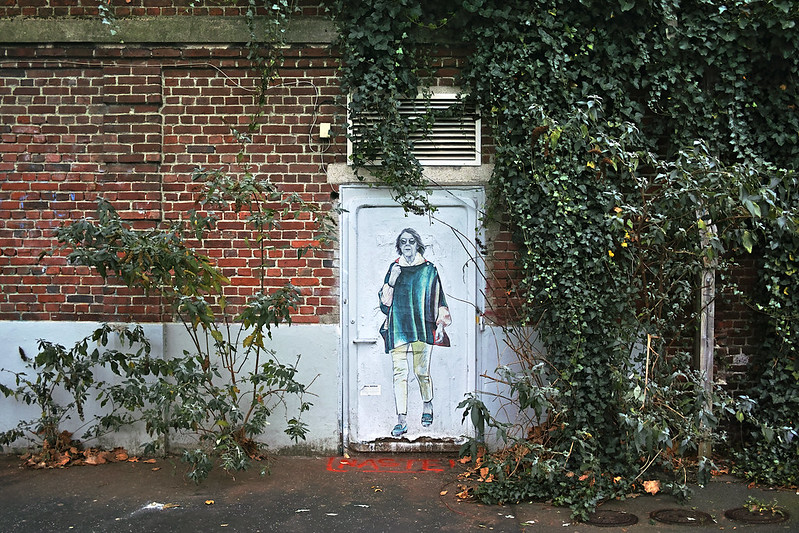Germany’s Foreign Minister, Annalena Baerbock, has defended Israel’s targeting of civilians in Gaza, stripping Palestinians of their fundamental right to protection under International Humanitarian Law. On 10 October 2024, she told the German Bundestag, “When Hamas terrorists hide behind people, behind schools … civilian sites could lose their protected status.”
In parroting Israel’s old narrative of human shielding, Baerbock provides a flimsy justification for the genocidal campaign against Palestinian civilians. For this claim to hold, Israel would need to prove that Hamas deliberately prevents civilians from evacuating “hostile zones”. Yet, under Israeli occupation, all of Gaza is a “hostile zone”, a concentration camp, where civilians and militants alike are trapped with no means of escape.
Baerbock’s position ignores the crucial fact that, even if Hamas were found to be using human shields, Israel, as an attacking force, remains bound by International Humanitarian Law. This includes obligations to uphold the principles of proportionality, distinction, and precautions to minimize civilian casualties. Most critically, Baerbock disregards that Israel, as an occupying power, cannot invoke the right of “self-defense” under international law when dealing with Gaza, a territory it illegally occupies alongside the West Bank, including East Jerusalem.
The Foreign Minister’s stance reveals a stark lack of empathy toward the 2.3 million Palestinians in Gaza who endured a year of live-streamed extermination. It also represents a blatant disregard for the principles of international law and human decency. Human rights organizations, UN agencies, and free media have consistently debunked the claims she has uncritically echoed. Instead of advocating for an end to the genocide in Gaza and taking a principled stand, Germany appears to be perpetuating its dark legacy by endorsing mass atrocities against Palestinians.
While the International Court of Justice, the International Criminal Court, and the global Palestine solidarity movement call for an end to the horrific assault on Palestinians, Germany remains shamefully aligned with genocide, refusing to learn from its past.
We, the undersigned, unequivocally condemn the German government’s support for Israel’s relentless acts of genocide against the Palestinian people. We denounce Minister Baerbock’s stance, which stands in stark defiance of international law and basic human decency. We demand that the German government immediately retract her statement and issue a formal apology to the Palestinian civilians—innocent victims caught in the flames of injustice. It is time for Germany to stand on the right side of history, to reject complicity in these crimes, and to honor the principles of humanity it once vowed never to betray.
Initiated by: The Palestine Academic Group (PalAc)
Palestine Academic Group (PalAc) is an independent non-profit, non-partisan academic organization that aims to broaden deliberation on the Palestinian national project of liberation, self-determination, and safeguarding the human dignity and historical rights of the Palestinian people.
Email: PalestineAcademic@gmail.com
Twitter: Follow @Pal_Ac1
You can sign this statement here.
Undersigned
1. Hendrik Süß, Friedrich-Schiller-Universität Jena, Germany
2. Sabine Broeck, University of Bremen, Germany
3. Simon-Rafael Fischer, Institute of Mathematics, Georg-August University, Germany
4. Manfred Liebel, University of Applied Sciences Potsdam, Germany
5. Benjamin Schuetze, Arnold Bergstraesser Institute (ABI), Germany
6. Dennis Büscher-Ulbrich, Kiel University, Germany
7. Christoph Günther, University of Erfurt, Germany
8. Robert Sauer-Ernst, FU Berlin, Germany
9. Berit Thorbjørnsrud, University of Oslo, Norway
10. Monica jaeckel, Independent Resaercher, Berlin, Germany
11. Nour Fanous, SSchulamt Dortmund, Germany
12. Mohamed Zinalabdin, Esslingen Hochschule, Germany
13. Juergen Mackert, University of Potsdam, Germany
14. Doris Bühler-Niederberger, Independent Researcher, Germany
15. Juan Cole, University of Michigan, USA
16. Gilbert Achcar, SOAS University, UK
17. Lila Abu-Lughod, Columbia University, New York, USA
18. Sinam Mirza, Oxford University, UK
19. Joshua Landis, University of Oklahoma, USA
20. Joshua Makalintal, University of Innsbruck, Austria
21. Keiko Sakurai, Waseda university, Japan
22. Melania Brito Clavijo, Universitat Autònoma de Barcelona, Spain
23. Astrid Jamar, University of Antwerp, Belgium
24. Minoo Mirshahvalad, University of Copenhagen, Denmark
25. Hayato Saigo, Nagahama Institute of Bio-science and Technology, Japan
26. Chiara Lanfranchi, Geneva Institute, Switzerland
27. Spyros Marchetos, Aristotle University of Thessaloniki, Greece
28. Randi Deguilhem, Centre National de la Recherche Scientifique, France
29. David Lyon, Queen’s University, Canada
30. Juan M. Amaya-Castro, Universidad de los Andes, Columbia
31. Christian Haesemeyer, University of Melbourne, Australia
32. Paola Rivetti, Dublin City University, Ireland
33. Tatiana Filimonova, National Library of Russia, Russia
34. Mulki Al-Sharmani, University of Helsinki, Finland
35. Carolina Nazzal, Universidad de cHile, Chile
36. Khaled Hroub, Northwestern University, USA
37. Fernanda Liberali, PUC-SP, Brazil
38. Sviataslau Valasiuk, University of Warsaw, Poland
39. Stefanie Baumann, New University of Lisbon, Portugal
40. Sari Hanafi, American University of Beirut, Lebanon
41. Natalia Maystorovich Chulio, University of Sydney, Australia
42. Abeer Al-Najjar, The American University in Sharjah, UAE
43. Walid Darwish, Aalborg University, Denmark
44. Andrea Meza Torres, UAM-I University, Malaysia
45. Jody Rosenblatt, King’s College London, UK
46. Ibrahim Fraihat, Doha Institute for Graduate Studies, Qatar
47. Koray Durak, University of Basel, Switzerland
48. Basem Ezbidi, Birzeit University, Palestine
49. Michele Lancione, Politecnico di Torino, Italy
50. Heba Ezxat, Ibn Haldun University, Türkiye
51. Ulrika Mårtensson, NTNU-Norwegian University of Science and Technology, Norway
52. Yadira Cordova, Universidad Central de Venezuela, Venezuela
53. Marc Oliveras, University of Barcelona, Spain
54. Askoka Thakur, Sister Nivedita University, India
55. Altay Karimli, Baku State University, Azerbaijan
56. Faten Ghattas, СУ “Св.Климент Охридски”, Bulgaria
57. Alessandra Bonazzi, University of Bologna, Italy
58. Oliver Scharbrodt, Lund University, Sweden
59. Yoshiko Kurita, Chiba University, Japan
60. Khaled Shnoune University of Boumerdes, Algeria
61. Sahar AlaaEldin, Göttingen University, Germany
62. Hideaki Shinoda, Tokyo University of Foreign Affairs, Japan
63. Samer Abomoghli, Qadisieh college, Iraq
64. William Youmans, George Washington University, USA
65. Mahmoud Abdurrohman, Aarhus universitet, Denmark
66. Yahya Qtaishat, Hashemite University, Jordan
67. Massih Zekavat, University of Groningen, The Netherlands
68. Aicha Elbasry, Arab Center for Research and Policy Studies, Qatar
69. Mkhaimer Abusada, Al-Azhar University, Palestine
70. Robert Boyce, London School of Economics, (LSE), UK
71. Silvia Maeso, Centre for Social Studies, University of Coimbra, Portugal
72. Federico Della Valle, University of Siena, Italy
73. Ruba Salih, University of Bologna, Italy
74. Luz Gómez, Universidad Autónoma de Madrid, Spain
75. Akin Akinade, Goergetown University, USA
76. Mohamed Magout , Free University Berlin, Germany
77. Shaery Yazdi, University of Antwerp, Belgium
78. Monica Dall’Asta, University of Bologna, Italy
79. Heiki Schroeder, University of East Angelia, UK
80. Francesca Biancani, University of Bologna, Italy
81. Eyad Elyan, Robert Gordon university, Scotland
82. Chandana Mathur, Maynooth University, Ireland
83. Jo-Anne Geere, University of East Anglia, UK
84. Lucia amorosi, Scuola Normale Superiore, Italy
85. Nadia Fadil, KU Leuven, Belgium
86. Ray Bush, University of Leeds, UK
87. João Rodrigues, Faculty of Economics, University of Coimbra, Portugal
88. Azizi Al-Azmeh, Central European University, Austria
89. Samer Chehayber, University of perugia, Italy
90. Punigeaola Manduca, UNIGE, Genoa, Italy
91. Thierry Nath, The Graduate Institue ,Geneva, Switzerland
92. James Smith, UCL, UK
93. Glenn Bowman, University of Kent, UK
94. Caterina Tono, Università degli Studi di Padova, Italy
95. Barbara Azaola Piazza, Universidad de Castilla-La Mancha, Spain
96. Jonathan Rosenhead, London School of Economics, UK
97. Donatella Della Porta, Scuola Normale Superiore, Italy
98. John Esposito, Georgetown University, USA
99. Claire Walsh, University of Edinburgh, UK
100. Pierre-Antoine Vettorello, University of Antwerp, Belgium
101. David Lloyd, University of California, Riverside, USA
102. Richard Rubenstein, George Mason University, USA
103. Eduardo Ballån, Universidad Camilo José Cels, Spain
104. Sondos Sandgren, Uppsala University, Sweden
105. Sevgi Dogan, Scuola Normale Superiore, Italy
106. M. Karacan, Germany
107. Sondod Al Sad, UCSF, USA
108. Claudia Laabar, Universität Wien, Austria
109. Les Levidow, Open University, UK
110. Johnny Stiban, Birzeit University, Palestine
111. Sultan Doughan, Glodsmith University, UK
112. Şirin Fulya Erensoy, University of Groningen, Netherlands
113. Omar Elgebely, Politecnico di Milano, Italy
114. Joanne Smith Finley, Newcastle University, UK
115. William Fortich Palencia, Universidad Pedagógica Nacional, Mexico
116. Ana Santos, University of Coimbra, Italy
117. Laura Nkula, University of Capetown, South Africa
118. Maria Grazia Rossi, Universidade Nova de Lisboa, Portugal
119. Johanna M. Lems, Universidad Complutense de Madrid, Spain
120. Islam Alshamleh Alshamlej, Cambridge University, UK
121. Annelys Devet, Antwerp University, Belgium
122. Lorenzo Iannuzzi, University of Forence, Italy
123. Greg Burris, Northwestern University, USA
124. Liza Goldman Huertas, Yale New Haven Hospital, USA
125. Evelyn Alsultani, University of Southern California, USA
126. Laura Stocker, Universität Wien, Austria
127. Asma Aouragh, TH – Bingen University, Germany
128. Silvana Rabinovich, UNAM university, Mexico
129. Francisco Vidal, Universidad de Jaén, Spain
130. John Gilbert, University of Florence, Italy
131. Ian Almond, Georgetown University, USA
132. Kamile Batur, Vienna University of Technology, Austria
133. Malek Abisaab, McGill University, Canada
134. Jeanette Jouili, Syracuse University, USA
135. Samia Botmeh, Birzeit University, Palestine
136. Stefan Winter, Université du Québec à Montréal, Canada
137. Julie Billaud, Geneva Graduate Institute, Switzerland
138. Yvonne Haddad, Georgetown University, USA
139. Jacqueline Perez, Université de Montréal, Canada
140. Tony Axon, Trinity College, Cambridge University, UK
141. Hipólito Rodríguez, CIESAS, Mexico
142. Yasir Soleiman, Cambridge University, UK
143. Elise Klein, Australian National University, Australia
144. Laura Feliu, Universitat Autònoma de Barcelona, Spain
145. Zena Hadjivasiliou, University College London, UK
146. Salam Kawakibi, CAREP – Paris, France
147. Nick Riemer, University of Sydney, Australia
148. Mohamed Abdelshafy, Coventry University, UK
149. Israa Asker, Newcastle University, UK
150. Patricia Hoyos, Externado, Columbia
151. Nizamettin Karataş, Tekirdağ Namık kemal Üniversitesi, Türkiye
152. Wael Hallaq, Columbia University, USA
153. Randa Farah, University of Western Ontario, Canada
154. Roger Few, University of East Anglia, UK
155. Mehran Kamrava, Georgetown University, USA
156. Laurie Brand, University of Southern California, USA
157. Mohamed Mohamed, University of Wales, UK
158. Dana Alkhiyami, Northwestern University, USA
159. Itab Shuayb, Cambridge University, UK
160. Halla Attallah, Georgetown University, USA
161. Donatella Donatella, Scuola Normale Superiore, Italy
162. Eyas Haj-Obeid, Quebec University, Canada
163. Blanca Camps-Febrer, UAB, Barcelona, Catalonia
164. Fadhel Kaboub, Denison University, USA
165. Prasannan Parthasarathi, Boston College, USA
166. Salwa Mohamed, Manchester Metropolitan University, UK
167. Lubna Samman, British Colombia University, Canada
168. Yaser Alsulh, Lund University, Sweden
169. Rafael Bustos, University Complutense of Madrid, Spain
170. Anne Maass, University of Padua, Italy
171. Hayal Akarsu, Utrecht University, Netherlands
172. Rosa Barotsi, University of Modena and Reggio Emilia, Italy
173. Rami Khouri, American University of Beirut, Lebanon
174. Nasri Barghouti, Liverpool College, UK
175. Sami Zemni, Ghent University, Belgium
176. Helga Baumgarten, Birzeit University, Palestine
177. Margaret Pappano, Queen’s University, Canada
178. Kim Van der Borght, Vrije Universiteit Brussel, Belgium
179. Anies Al-Hroub, American University of Beirut, Lebanon
180. Ricardo Marzuca, Universidad de Chile, Chile
181. Bassam Al-Agha, University college of applied sciences-Gaza, Palestine
182. Amilcar Figueroa, Universidad Bolivariana de las Comunas, Venezuela
183. Mahdi Fneish, American University of Beirut, Lebanon
184. Razan Shawamreh, Eastern Mediterranean Univesrsity, Cyprus
185. Robert Austin Henry, CIPPSAL, Chile
186. Paolo Cuttitta, Università di Genova, Italy
187. Atef Lubbad, Al Quds University, Palestine
188. Charles Butterworth, University of Maryland, USA
189. Asmaa Abu alhaijaa, Alyarmouk University, Jordan
190. Chandni Basu, Sister Nivedita University, Kolkata, India
191. Tamer Qarmout, Doha Institute for Graduate Studies, Qatar
192. Neyda Lopez, Universidad Bolivariana de Venezuela, Venezuela
193. Mohamed Alsudairi, Australian National University, Australia
194. Karima Laachir, Australian National University, Australia
195. Belal Salaymeh, Geneva Graduate Institute, Switzerland
196. Palpo A. de la Vega M., Cátedra Africa, Medio Oriente y Asia de la Universidad de Tifariti
197. Amjad Abu el ezz, Arab American University, Palestine
198. Tariq Modood, University of Bristol, UK
199. M Fneish, Lebanese University, Lebanon
200. Rachid Jarmouni, Université moulay ismail de Meknes Morocco, Morocco
201. Mustafa Jazar, Lebanese University, Lebanon
202. Ramazan Aras, Ibn Haldoun University, Türkiye
203. Raymond Brassier, American University of Beirut, Lebanon
204. Fathy Alsolh, American University of Sharjah, UAE
205. Mustafa Jarrar, Birzeity University, Palestine
206. Baydaa Al Ayoubi, Lebanese University, Lebanon
207. Marta Tawil Kuri, El Colegio de México, Mexico
208. David Mond, University of Warwick, UK
209. Sophie Richter-Devroe, Hamad Bin Khalifa University, Qatar
210. Hasan Ayub, Al Najah National University, Palestine
211. Omar Khalifa, Georgetown University, Qatar
212. Hisham Hamad, Al Quds University, Palestine
213. Gabriel Pérez, Universidad Nacional Autónoma de México, Mexico
214. Ahmed Khaled, Birzeit University, Palestine
215. Ali Kuşakcı, Ibn Haldoun University, Türkiye
216. Mira Al Hussein, University of Edinburgh, UK
217. Walid Kharroubi, Belgrad University, Serbia
218. Abdel Hakim Al Husban, Alyarmouk University, Jordan
219. Nada Raslan, RHU, Lebanon
220. Esad Širbegović, Institute for the research of genocide Canada IGC, Canada
221. Carmen Abou Jaoude, University Saint-Joseph of Beirut, Lebanon
222. Haitham Sarhan, Qatar University, Qatar
223. Tariq Dana, Doha Institute for Graduate Studies, Qatar
224. Alejandrina Reyes, Universidad Nacional Experimental Simón Rodríguez, Venezuela
225. Isabel Piña, Universidad Central de Venezuela
226. Ibrahim Bechouri, CUNY University, USA
227. Salim Tamari, Birzeit University, Palestine
228. Özmen Metin, Akdeniz University, Türkiye
229. Idrees Ahmad, University of Essex, UK
230. Walid Magdy, The University of Edinburgh, UK
231. Marwa Nassar, Arab American University, Palestine
232. Surer Mohamed, Cambridge University, UK
233. Hazel Marsh, University of East Anglia, UK
234. Adrija Bose, Indian Statistical Institute, India
235. Ibrahim Zabad, St. Bonaventure University, USA
236. Rahmi Oruç, Ibn Haldoun University, Türkiye
237. Luisana Colomine, Universidad Bolivariana de Venezuela
238. Abdulrahman Ibrahim, Birzeit University, Palestine
239. May Farah, American University of Beirut, Lebanon
240. Javed Khan, TISS, India
241. Atef Alshaed, University of Westminster, UK
242. Muhannad Ayyash, Mount Royal University, Canada
243. Antonio Barrocu, Università degli Studi di Torino, Italy
244. Detlev Quintern, Türkisch German University, Istanbul, Türkiye
245. Aryak Guha, S C College, west bengal state university, India
246. Bula Bhadta, Sister Nivedita University, kolkata, India
247. Castro Aurelio, University of Bologna, Italy
248. Ömer Yaman, Ankara Üniversitesi, Türkiye
249. Clara Ferri, Universidad Nacional Autónoma de México Mexico
250. Mouna Hashem, University of Michigan, USA
251. Lucia Cirianni Salazar, Grupo de Estudios sobre Eurasia
252. Emine Güneş, Samsun University, Türkiye
253. Benoit Challand, New School for Social Research, USA
254. Emannuel Guerisoli, Zolberg Institute on Migration and Mobility, USA
255. Jenny Pearce, London School of Economics, UK
256. Scott Bollens, University of California, Irvine, USA
257. Mohammed Bamyeh, University of Pitsburgh, USA
258. Nadia Naser-Najjab, University of Exeter, UK
259. M. Nurullah Turan, Ondokuz Mayıs Üniversitesi, Türkiye
260. Recep Köklü, Samsun University, Türkiye
261. Mehmet Fatih İzgi, Geneva Graduate Institute, Switzerland
262. Beirach Barak, Cinelab Ifilonva, Nova University, Portugal
263. Rashid Yahiaoui, HBKU, Qatar
264. Jihad Alshwaikh, Birzeit University, Palestine
265. Nuhad Dumit, American University of Beirut, Lebanon
266. Karim Eid-Sabbagh, Independent Researcher, Lebanon
267. Fatih Gumus, Recep Tayyip Erdoğan Üniversitesi, Türkiye
268. Martha Mundy, London School of Economics, UK
269. James Dickins, University of Leeds, UK
270. Michelle Obeid, University of Manchester, UK
271. Muzaffer üzümcü, Namik Kemal University, Türkiye
272. Anna Kristina Hultgren, The Open University, UK
273. Hikmet Çadır, Namık Kemal Üniversitesi, Türkiye
274. Killian Odochartaigh, University of Edinburgh, UK
275. Nurcan Güneş, Mardin Artuklu University, Türkiye
276. Haideh Moghissi, York University, Toronto, Canada
277. Saeed Rahnema, York University, Canada
278. Bouchra Mossmann, SDU Odense (University of Southern Denmark), Denmark
279. Jork Wiegratz, University of Leeds, UK
280. Francisca Urias, UAM-Xoch, Mexico
281. Che Broadnax, The New School, New York, USA
282. Anthony Gorman, University of Edinburgh, UK
283. Johannes Kurzeder, University of Bologna, Italy
284. Jonathan Jonsson, University of Oslo, Norway
285. Catherine Charrett, University of Westminster, London , UK
286. Ferran Izquierdo-Brichs, UAB, Spain
287. Ziba Mir-Hosseini, SOAS, London, UK
288. Ghassan Khatib, Birzeit University, Palestine
289. Richartd Tapper, SOAS, London, UK
290. Jonas Grabbe, CENIEH, Spain
291. Heike Schroeder, University of East Anglia, UK
292. Betül Başaran, St. Mary’s Collection of Maryland, USA
293. Vanessa Kleinheinz, University of Edinburgh, UK
294. Are John Knudsen, Chr. Michelsen Institute (CMI), Norway
295. Mohammad Reza Nilfar, Institute for Social Sciences and Humanities, Netherlands
296. Amir Taha, Amsterdam University, Netherlands
297. Daniel Maldonado Juárez, Centro de Estudios de Asia y África, El Colegio de México, México
298. Teresa Almeida Cravo, University of Coimbra, Portugal
299. Mariateresa Crosta, INAF – OATo, Italy
300. Geraldo Campos, Universidade Federal de Sergipe, Brazil
301. Roger Hammersland, Statistics Norway, Oslo New University College, Norway
302. Joseph Bryant, University of Toronto, Canada
303. Daniel Lenkeit, FU Berlin, Germany
304. Yusuf Timol, University of Central Lancashire, UK
305. Lara Urban, Helmholtz Munich / Technical University of Munich, Germany
306. Arturo Hartmann Pacheco, Ceai-UFS, South Africa
307. Faysal Bibi, Museum für Naturkunde Berlin / University of Potsdam Germany
308. Geraldine Hepp, Leuphana Universität, Germany
309. Jean-René Ruault, NEMO, Madrid, Spain.




